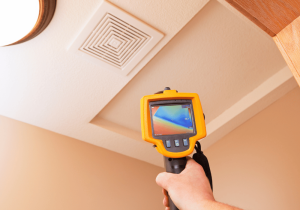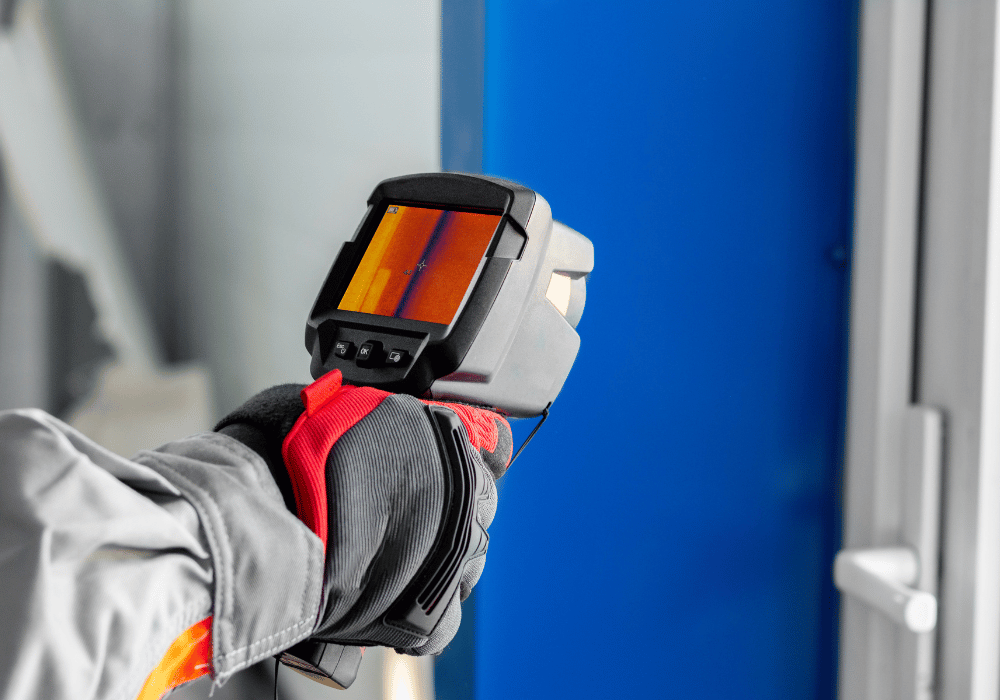When it comes to home inspections, there’s more at play than meets the eye. Thermal imaging has emerged as a game-changing technology, enabling home inspectors to identify hidden issues that might otherwise go unnoticed. Whether you’re a homeowner, buyer, or real estate professional, understanding how thermal imaging works and its value in home inspections can make a huge difference in safeguarding your investment. This blog will explore what thermal imaging is, how it works, and its unique applications in home inspections. You’ll also discover its advantages, limitations, and how it enhances the overall inspection process.
 Understanding Thermal Imaging
Understanding Thermal Imaging
Thermal imaging, also referred to as infrared imaging, is a non-invasive technology that detects heat differences in objects. These differences are then displayed as a visual “heat map” using various colours to represent temperature variations. For example, warmer areas might appear red, orange, or yellow, while cooler ones are often represented by blue or green shades. By capturing these subtle temperature changes, thermal imaging allows professionals to see beyond the surface of walls, ceilings, and floors, identifying anomalies that indicate potential problems without physically opening up structures.
How Thermal Imaging Works
At its core, thermal imaging technology relies on infrared cameras. These cameras measure the infrared radiation emitted by objects and translate it into thermal images. Here’s a simple breakdown of the process:
1. Detection of Infrared Radiation: Every object emits some level of infrared radiation based on its temperature. Thermal cameras detect this radiation and record the data.
2. Conversion to Visual Data: The recorded data is converted into a visual thermal image, which displays the temperature differences as a colourful map.
3. Analysis by Experts: A skilled home inspector analyzes the thermal image to identify irregular temperature patterns, which may point to potential issues.
While the science behind thermal imaging is complex, the insights it provides are invaluable for identifying hidden problems.
Key Uses of Thermal Imaging in Home Inspections
Thermal imaging has become an indispensable tool to ensure comprehensive and accurate home inspections. Here are some of its primary applications in the field:
Detecting Moisture Intrusion
One of the most crucial uses of thermal imaging is identifying moisture intrusion. Moisture trapped within walls, ceilings, or floors can lead to severe issues like mold growth, structural damage, and reduced air quality. Thermal imaging can spot anomalies in temperature that often correspond to the presence of water. Moist areas tend to retain cooler temperatures than their dry surroundings, making them easy to detect using an infrared camera. Inspectors can pinpoint leaks from roofs, plumbing, or hidden sources, helping homeowners address the issue before it turns into an expensive repair.
Identifying Insulation Gaps
A thermally efficient home is crucial for maintaining comfortable temperatures and reducing energy bills. However, gaps or uneven insulation can compromise efficiency by allowing heat to escape in the winter or seep in during the summer. Thermal imaging is a highly effective way to detect insulation issues. For instance, inspectors can visually identify areas of heat loss in walls, attics, or around windows simply by analyzing the thermal images produced during an inspection. This early detection gives homeowners a chance to improve insulation, leading to better energy efficiency and lower utility costs.
Finding Electrical Hot Spots
Electrical systems are integral to any modern home, but faulty wiring or overloaded circuits can pose serious safety hazards. These issues often cause components to overheat, which could eventually result in electrical fires. Thermal imaging helps detect these “hot spots” in electrical panels, outlets, and circuit breakers. This makes it possible to fix electrical risks before they escalate into a crisis, ensuring peace of mind for homeowners and occupants.
 Benefits of Thermal Imaging Inspections
Benefits of Thermal Imaging Inspections
Thermal imaging offers significant advantages for home inspections, including the following:
- Non-Invasive and Fast
Thermal imaging allows inspectors to view hidden issues without tearing down walls or ceilings. This non-invasive approach saves both time and money.
- Enhanced Accuracy
Infrared cameras can detect problems that can’t be seen with the naked eye, offering a more reliable and thorough inspection.
- Cost-Effective Maintenance
By identifying issues before they worsen, thermal imaging helps homeowners avoid costly repairs down the road.
- Comprehensive Reporting
Thermal imaging generates clear visual data, making it easier for homeowners to understand what’s happening behind the scenes.
When included as part of a home inspection, thermal imaging provides unmatched value for all parties involved.
Limitations of Thermal Imaging
While thermal imaging is powerful, it’s not a one-size-fits-all solution, and understanding its limitations is key.
1. Requires Expertise: Interpreting thermal images accurately requires skill and experience. Misreading the images could lead to incorrect conclusions.
2. Cannot Identify Specific Materials: Thermal imaging detects temperature variations, but it doesn’t identify specific materials or the exact reasons behind the anomaly.
3. Environmental Factors Influence Results: Temperature readings may be affected by environmental conditions such as wind, sunlight, or rain, potentially impacting accuracy.
Given these limitations, thermal imaging is most effective when used alongside traditional inspection methods.
Integrating thermal imaging into home inspections is a game-changer. It adds an extra layer of detail and precision, helping uncover issues that might go undetected through traditional methods. For homeowners and buyers, this means greater confidence in knowing a property’s true condition. For inspectors, it’s a way to provide more comprehensive reports and maintain their reputation for quality. If you’re considering buying or maintaining a home, choosing an inspection service that includes thermal imaging is a smart move. It ensures peace of mind, energy efficiency, and reduced risks, potentially saving you thousands in unexpected repair costs.

